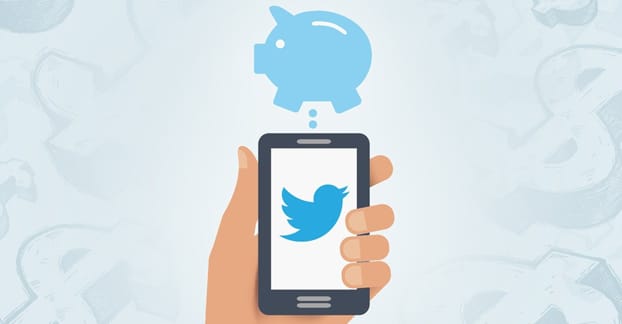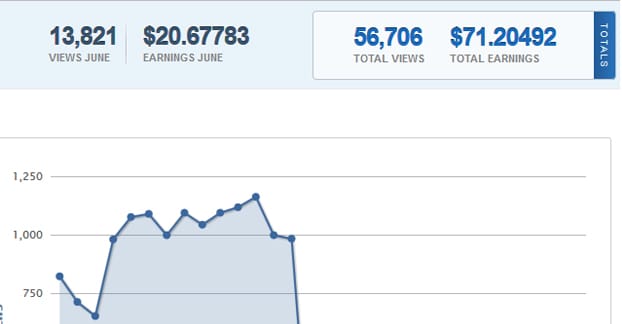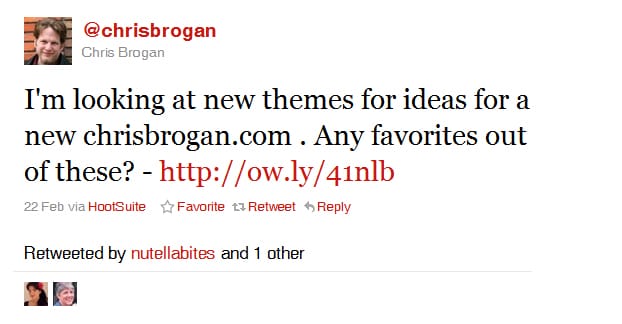Twitter is a great marketing tool, and it can be used in a number of different ways to make money. Some of them are direct, while others make it part of a funnel leading to your website. How do you use Twitter for making money? One of these ideas might apply.
Automated Spam
Here’s one thing you can do, though I really don’t recommend it. Systems like this one offer to set you up with a system that lets you “generate automated income” and do very little to hide the fact that all they’re doing is spamming Twitter. You install this app and your account is taken over by the spammer, who is selling retweets or mentions or some other form of engagement on a site like Fiverr. When someone goes to buy engagement, the spammer presses a button and your account – and a thousand others – all perform the action he wants.
Plus “all” you have to pay is $20! Because it’s gong to cost $100 when it eventually (never) launches, that’s a huge discount! The spammer – or their affiliate, more realistically – gets your $20, and you get your account taken over and rendering unusable.
To be clear, I mention this not because it’s a viable money-making method. It’s not a viable method. It’s an affiliate scam where, at best, you’ll be plugged into a pyramid scheme and forced to make your money selling the same product you got suckered into buying. At worst, it’s a straight up cut and run; you send your $20, they send you a dud app, and nothing happens.
Use a Monetized Shortlink
There are a number of different services out there for monetized shortlinks. Like bit.ly, but with interstitial ads, you know? The idea is pretty simple. Come up with content that people want to see, or at least think they want to see. Clickbait is wonderful here, and since you’re going for ad view revenue, you need as many clicks and as many views as possible. You’re shooting for the lowest common denominator for content here, the kind of stuff that shows up as related when people visit Buzzfeed. Take the link and shorten it with a monetized shortener like Adf.ly and post it.
When people find your tweet, either because they follow you or because of the hashtags or search terms you use, they’ll want to click the link. When they click the link, they see your ads, and may click them. This gets you paid. The more people who do this, the more you earn.
The downside to this method is the amount of money it makes. That is to say, how little it makes. URL shortlink ads are pretty notoriously blocked and most people don’t click them. We’re talking $1 a day kind of earnings, maybe a bit more if you’re extremely popular. A guy on Black Hat World promotes it as $10 per day, which is pretty minimal as far as income is concerned. It’s decent if all you want is weekly beer money, but you aren’t going to grow into a living wage out of this.
The roadblock to this method today is finding a monetized URL shortener that works on Twitter. Ad.Fly is known to be restricted or blocked entirely on Twitter, as are some other shorteners that Twitter has flagged as malicious. Finding the right shortener to make you some cash is half the work of this method, and that’s not because the other half is minimal.
Use a Twitter Peddler Service
There used to be a service called TweetPeddler that allowed any Twitter user to register and start making revenue by posting sponsored tweets as paid for by other TweetPeddler users. The idea was that you would say “hey, I have X follows and I tend to post about Y topics.” The advertiser would decide you’re worth $3 for a tweet and would pay that much for you to post a message they create. This was automated using an app so you didn’t have to deal with the advertisers directly. This particular service allowed you to set the price of your tweets, so you could filter out the lowest priced advertisers and make sure the ones who want to use you really are willing to pay.
TweetPeddler is gone these days. Twitter decided it was abusive, and for good reason; it was used frequently to spam the lower-priced users with hateful or racist tweets. Sure, those users made a bit of money before they were banned, but Twitter found it better to just shut down the app altogether. That doesn’t mean, however, that there aren’t other similar services out there.
All of these services allow you to set your price, or will analyze your following and your reputation in order to decide on the niche and the value of your tweets. They’re all variations on the same thing; paying you to make tweets as ads for the advertisers in question. It’s up to you to decide where your line is drawn, how often you’re willing to post ads, and how much you want to try to make from the platform.
Grow an Account and Sell Advertising
This method is pretty much the same as the previous, except you’re not using a service to do it. Why not? Well, a service would be easier, but as a consequence, you have less choice in what gets posted to your feed, and you have a lower average value on your tweets. When you take the time to carefully filter your potential advertisers, you have a better chance of making sure the people who advertise on your feed are going to fit in.
Essentially, you want to look for the kinds of people you would already recommend. A gamer might try to find gaming-related affiliate programs through storefronts like GMG, or they might look for a review site that would pay for a bit more exposure. They don’t want to be a shill for the next “shovelware title”, so they filter who they’re willing to advertise for.
Ideally, this will get you a larger per-tweet income, but you’ll have to put a lot more work into it. It’s not nearly as automatic as the previous method. That said, if you’re diligent and can get a decent set of advertisers, you’ll be able to make quite a bit of money.
There are sites that help facilitate that as well. The big one is MyLikes, which works for other social feeds as well. It’s similar to the more automated sites above, but gives you a lot more control, both over the people who advertise with you and the prices you charge.
Sell Affiliate Products to Followers
At some point, you might begin to realize that the value of a tweet is not necessarily in the tweet itself, but in the message. It’s difficult to make a lot of money selling individual tweets, because they have a fixed and generally low value. You have to tweet a lot, and that drives away your users, which drops your following and your reputation, which devalues your tweets further.
Instead, why not make some money “selling” the things you already like to talk about? That’s what affiliate marketing is all about, though many marketers go the other route and find products to sell and then pretend it’s what they love to talk about. Either path works, so long as you build a following.
The basic process of affiliate marketing on Twitter is pretty simple. First, you build a sizable following, at least a few thousand people. Remember, engagement rates on Twitter are pretty bad, and you need more than just basic engagement to make money from affiliate marketing.
Ideally, you will build this audience out of people who are interested in the topic you’re covering. These people are interested in you because you talk about that topic, you share blog posts about that topic, you curate content about that topic, and so forth. You become a hub for people to see content in the industry, and that’s what’s important.
Once you have gathered this audience, you register for an affiliate program. You can do this through an affiliate network, or through individual referral programs. Amazon Affiliates is a good example of a network that gives you access to millions of products, while something like Massdrop is an example of something that only applies to the one site with a limited scope.
Now, peppered in throughout your other normal posts, you start promoting products. If you’re promoting through Amazon, all you really need to do is find an industry product and link it using the Amazon Affiliates shortlink you’re given. You can generate these easily when you’re a member of the affiliates program; just navigate to the product page and click the “generate shortlink” button.
From there, you’re done. Any time someone clicks on that link and goes on to buy anything at all from Amazon, you get a commission from it. It’s not a large commission, of course; Amazon takes most of the cash. However, since it can apply to anything on Amazon, it can work out to be quite significant.
There are dozens of affiliate networks and millions of offers out there, so there’s room for just about anyone. The trick is getting a large enough and engaged enough audience to actually make a decent amount of money about it. Thankfully, there’s a lot of information about affiliate marketing out there, and once you get started with it on Twitter, you can transition it to a site-based business as well.
Use Twitter to Sell Off-Site Products
Speaking of having a site-based business, you can have that too. A lot of people out there have businesses or blogs that have their own monetization strategies. You could be selling products, you could be running affiliate ads, you could be monetizing through PPC or PPM ads, or whatever else you want to do. You could even be hyping up the site to sell it before repeating the process.
The point is, Twitter can be used as part of a marketing strategy as well as just a sales portal. Use Twitter to become a content hub, like I mention in the affiliate marketing section. Gather a large audience and condition them to want to click the links you post by sharing consistently good content. Then just continue to do that, with the addition of your own high quality content and product links in the mix. As far as any of your followers are concerned, you’re just sharing high quality content and products. They don’t really care if you’re the one selling them or not, so long as you’re honest about it.
The only time you run into issues with this is when you start lying and hiding your connection to promote high value but low quality offers. If you wouldn’t actually vouch for a product, don’t try to sell it on Twitter; it just won’t work.
Sell Twitter Growth Consulting Services
You might reach a point where your marketing is failing or your business falters, but you don’t want to get out of the game just yet. This is another opportunity, believe it or not. What you can do here is turn to the other side of the game. Don’t be the one selling products or growing an audience; be the one to teach others how to do those things.
Consulting is a time-honored transition point for many experts who aren’t getting paid enough doing what they do. They can charge more and make more for their time by instructing others in how to do what they do. If you can prove that you can grow a Twitter account in the space of a few months, you can put that expertise to work. Start a blog about growing a Twitter following and sell your services as a consultant.
There are a huge number of people out there looking to get into Twitter, either to promote their own businesses, or to sell their own products or affiliate offers. Having “been there and done that” you can offer advice, provide tools, and generally help these people accomplish their goals. All of this for a relatively high per-hour cost that people are willing to pay and that makes you more overall than you could be making with active marketing.
The best part is that consulting and marketing are not actually mutually exclusive. You can keep up with an affiliate business or a product sales business while also offering your consulting expertise and further enhance your profits. You just, you know, have to actually have the experience and the ability to make good on your consulting claims. If you don’t actually have the skills to back up your claims, you’re not going to go far in the consulting world.









